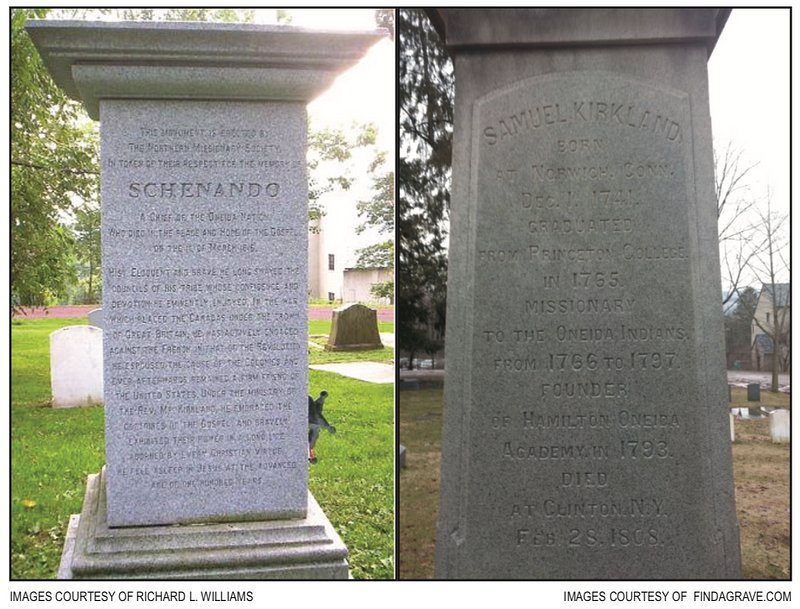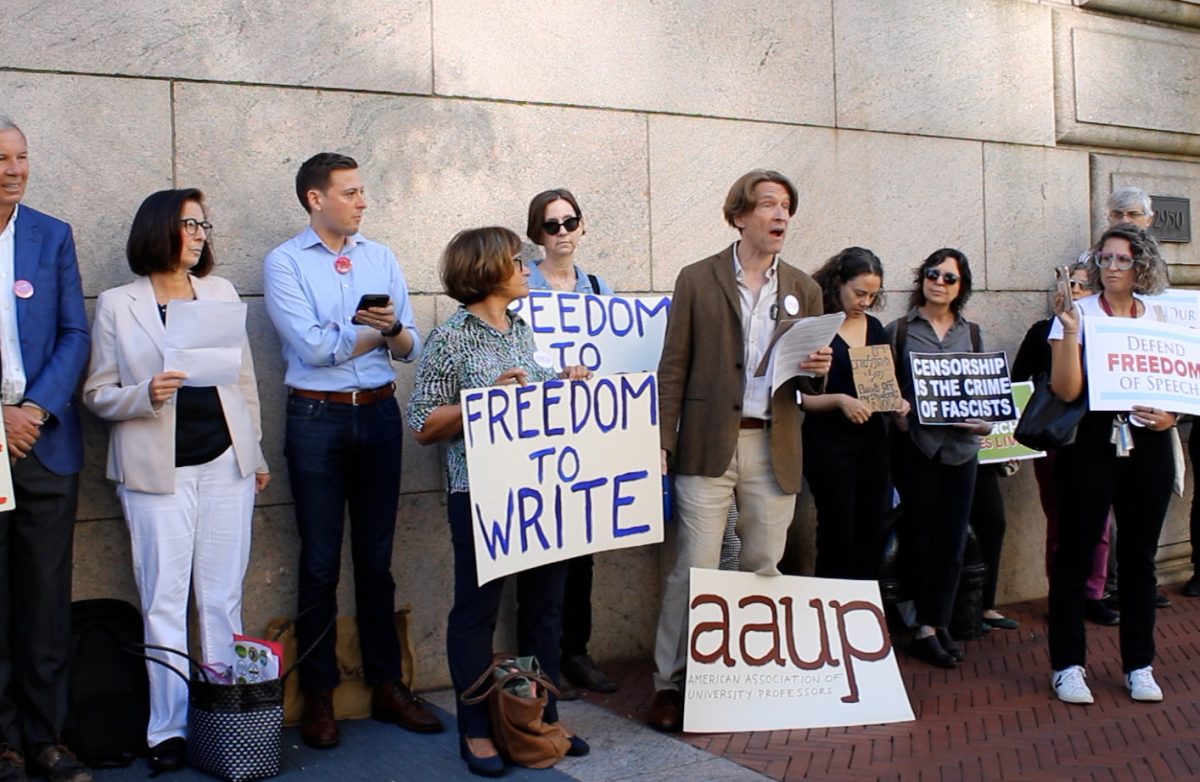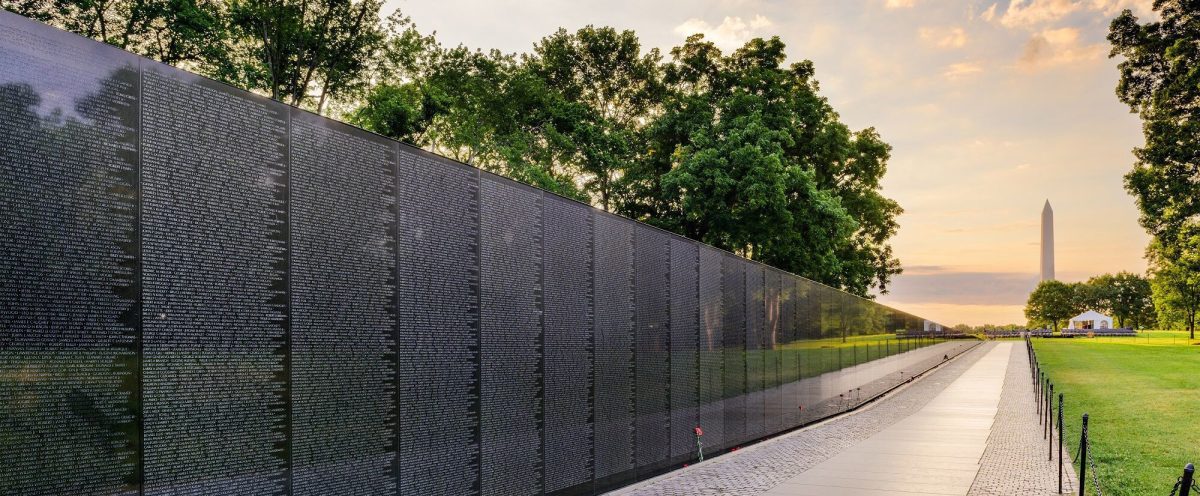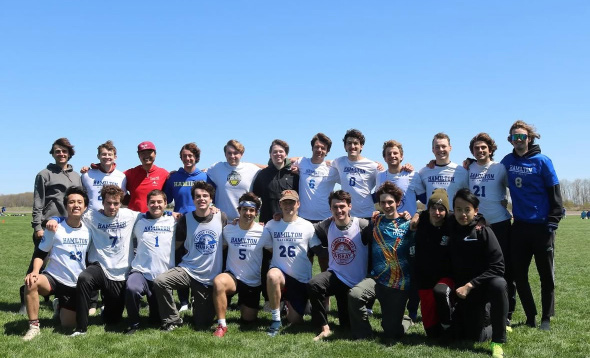Hamilton College Cemetery
“Who’s buried in Grant’s Tomb?” was a popular one-liner used by comedian Groucho Marx. Now we can ask: “Who’s buried in the Hamilton College Cemetery?”
The Board of Trustees established the Cemetery in August of 1820. Prior to then, the Old Burying Ground on Kirkland Avenue was where many Hamilton-connected people were buried. In 1855, the Cemetery was enlarged when Professor Edward North donated half an acre of land.
Professors, presidents, alumni, their spouses and children lie buried on the eastern slope of College Hill amidst the trees, red shale paths, and shrubs adjacent to Bristol Center and Morris House.
Here are some of the prominent people interred there.

Azel Backus served as Hamilton’s first president from 1812–1816; he died of typhus on December 16, 1816, after attending to a student with the disease. Backus was buried in the Old Burying Ground on Kirkland Avenue.
Professor Seth Norton succeeded Backus as acting president before dying two years later. In 1820, their bodies were exhumed and reburied in the newly established College Cemetery.
When Samuel Kirkland died in 1808, he was buried behind his mansion on Harding Road. Oneida Chief Schenando, upon his death in 1816, was buried beside Kirkland, as was his wish. In 1856, the bodies of Kirkland and Schenando, as well as Kirkland’s daughter, Eliza, who died in 1819, were disinterred and transferred to their present sites in the College Cemetery. Famous Hamilton graduate Gerrit Smith was present at that ceremony. A new monument for Schenando was dedicated in 1999.
Many other notable administrators
and faculty members are buried in the cemetery, including Professor of Classics Edward North, Class of 1841 and Hamilton’s longest-serving faculty member at 58 years, and President Melancthon Woolsey Stryker, Class of 1872 and Hamilton’s longest-serving president between 1892 and 1917.
Elihu Root, Class of 1864, had an illustrious career as a lawyer, US Senator, diplomat, Secretary of State, and Secretary of War. In 1912, he was awarded the Nobel Peace Prize. Root was also a long-time Hamilton trustee, board president, and generous graduate whose father and grandfather had taught math and science at Hamilton. Originally they came from nearby Vernon.
Root owned much of the land in the College area, and his former summer home
on the south side of College Hill Road now houses administrative offices. This house is listed on the National and State Registers of Historic Places.
Other Hamilton deans and presidents buried there are Dean Frank Ristine (1884–1958), Dean Winton Tolles (1906–1980), Dean Arthur Percy Saunders (1869–1953), President Frederick Carlos Ferry (1868–1956), President Henry Davis (1771–1852), President Robert McEwen (1906–1967), President Simeon North (1802–1884), and Trustee Chair Clark Hayes Minor (1875–1967).
Numerous members of the Root family are interred at the cemetery along with the prominent Elihu Root. Among them include his brothers Oren Root Jr. (1838–1907) and Edward Walstein Root (1841–1870), and his father Oren Root (1803–1885). Including spouses and children, some 21 members of the Root family are buried in the College Cemetery.
Professors from more recent years buried here include Edgar B. Graves (1898–1983), David Maldwyn Ellis (1914–1982), John S. Gambs (1889–1986), Lawrence K. Yourtee (1917–1997), David R. Millar (1932–1993), G. Harvey Cameron (1902–1977), John Mattingly (1902–1994), Thomas McNaughton Johnston (1904–1986), Franklin Hunt (1907–1993), and Sidney Wertimer (1920–2005).
Alexander Woollcott, Class of 1909, became a literary and drama critic and writer in New York City in the 1920s and 1930s. Woollcott founded the Charlatans theater group, which still performs today. He also joined Dorothy Parker and other literary figures at the Algonquin Round Table, a hotel meeting place in the city. He wrote for the
New York Times
and the
New Yorker
as a commentator and critic and also was on the radio in the 1930s.
Other notables are: Samuel Eells (1810–1842), an early student of the College and founder of Alpha Delta Phi fraternity; Greg Batt, legendary hockey coach (1925–1985); artists William C. Palmer (1906–1987) and James Penney (1910–1982); Wallace B. Johnson (1892–1967), College Secretary; G.H.F. Peters (1813–1890), Director of the Litchfield Observatory; David Ellis, historian (1914–1999); Walter Pilkington, College Librarian 1952–1976 (1910–1983); and Charles Avery, chemistry profess or and early pioneer in daguerreotypes (1795–1883).
Greek columns from the former Truax Hall adorn a section of the cemetery. Truax was razed to make way for the Burke Library in 1970. The columns survive on an inscribed stone base in the cemetery.
In all, the College listing of burials contains about 300 names.

















